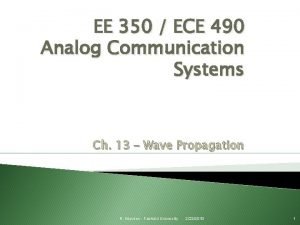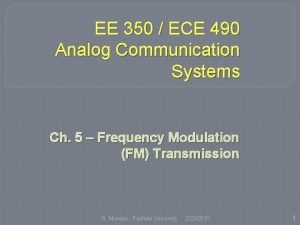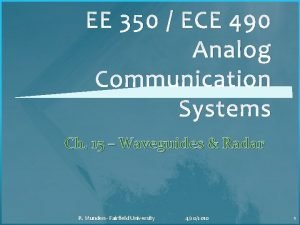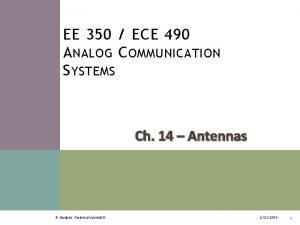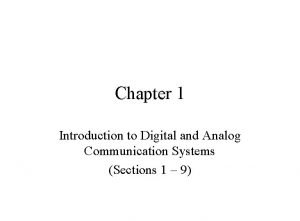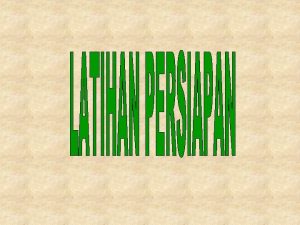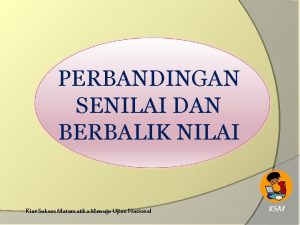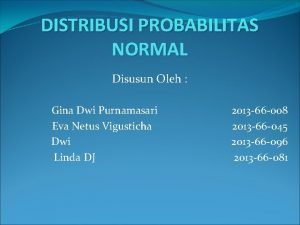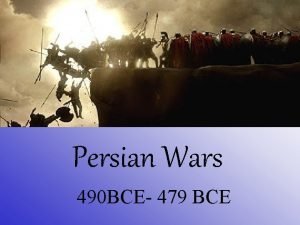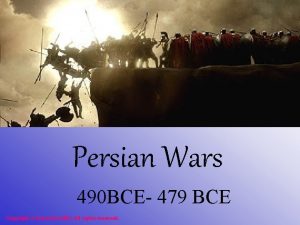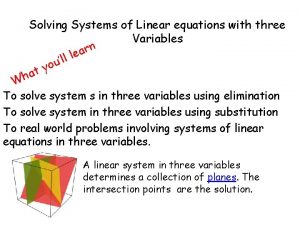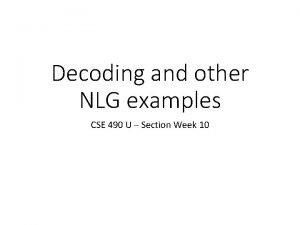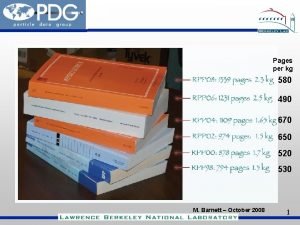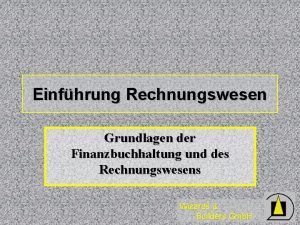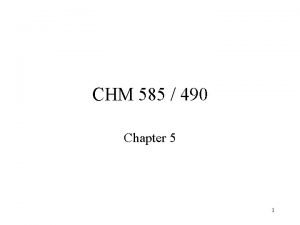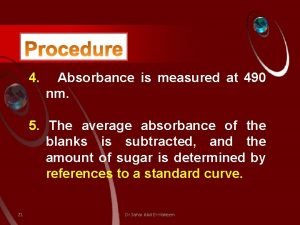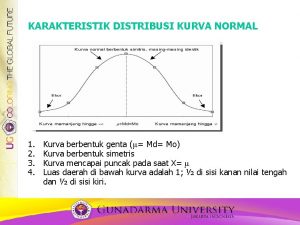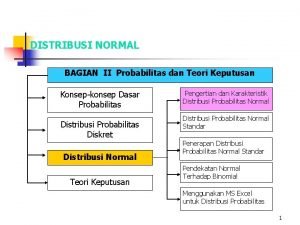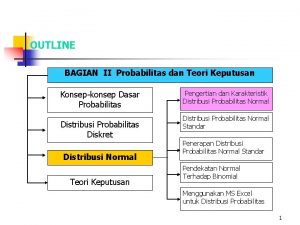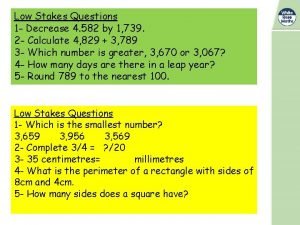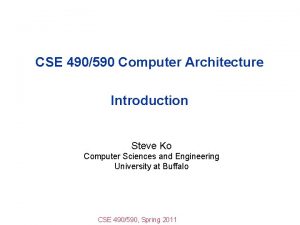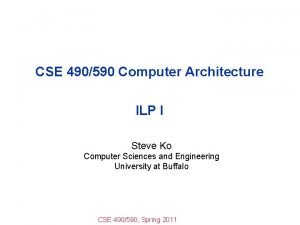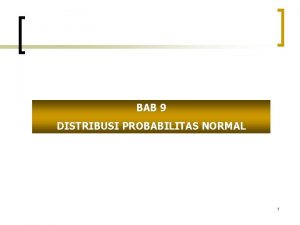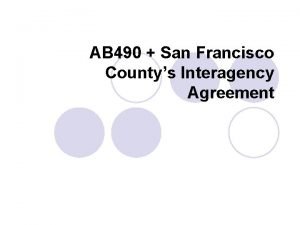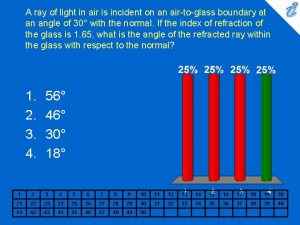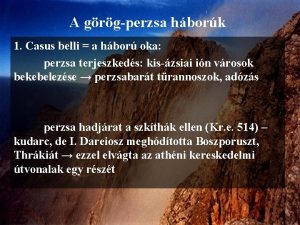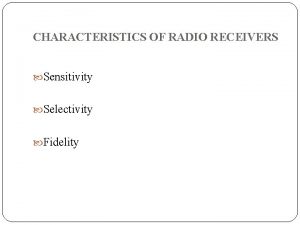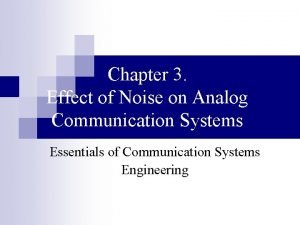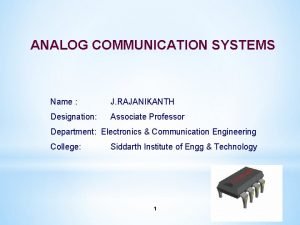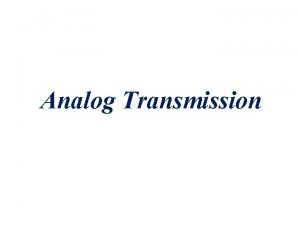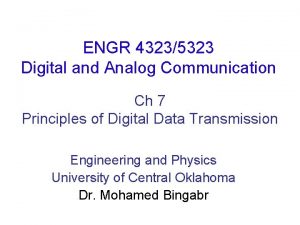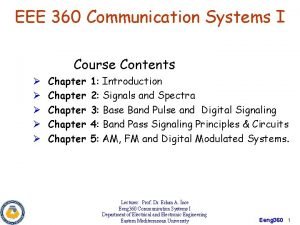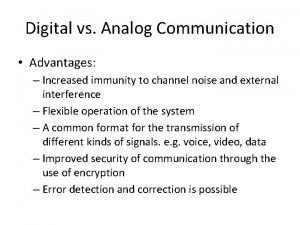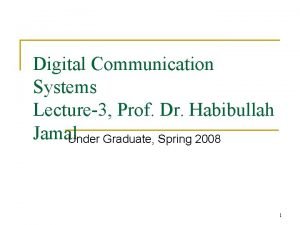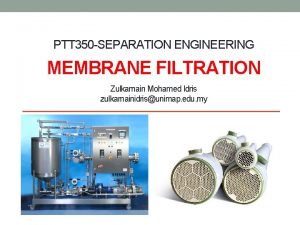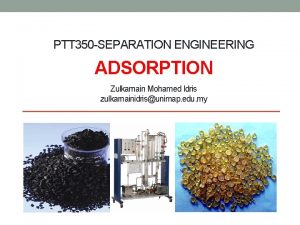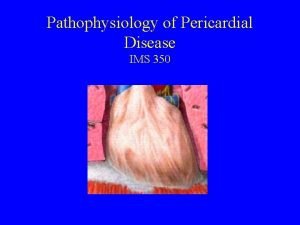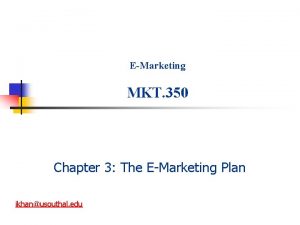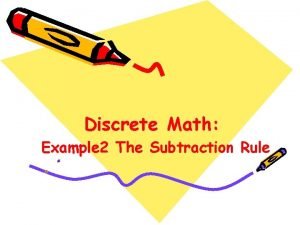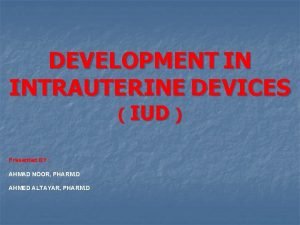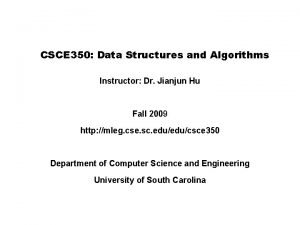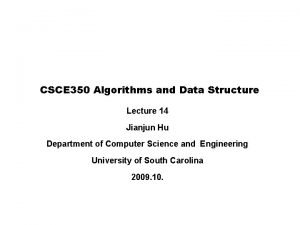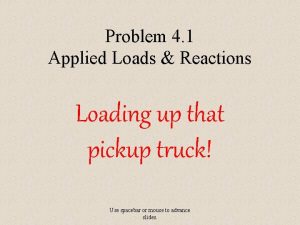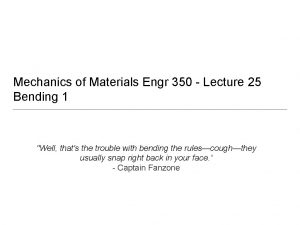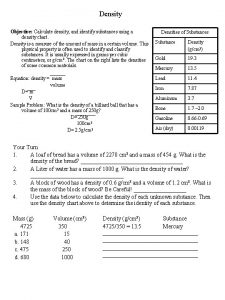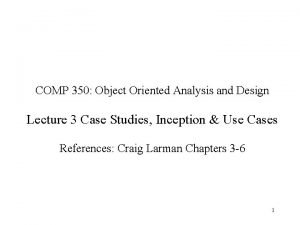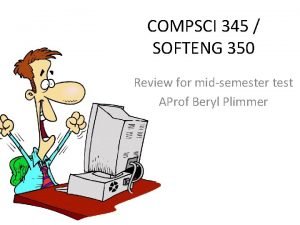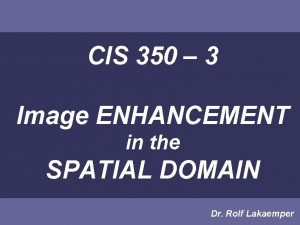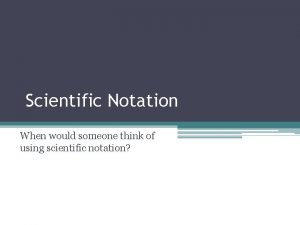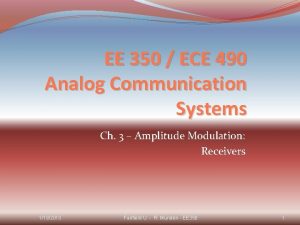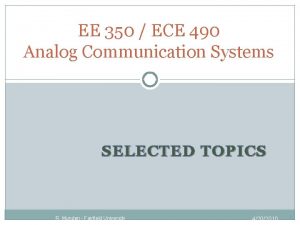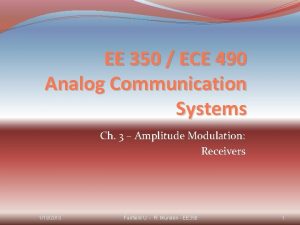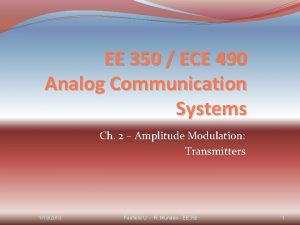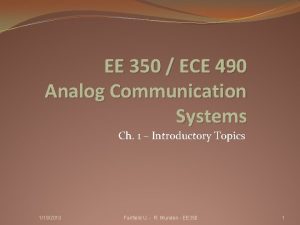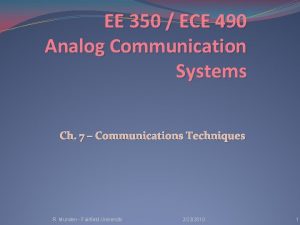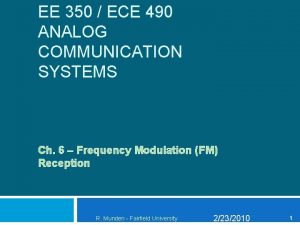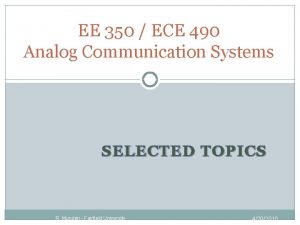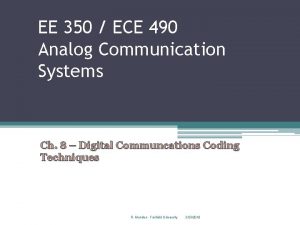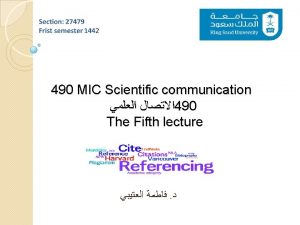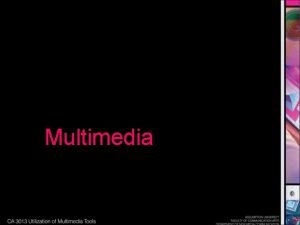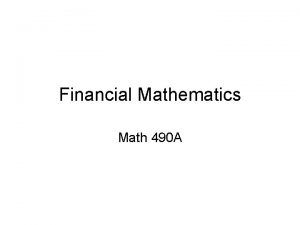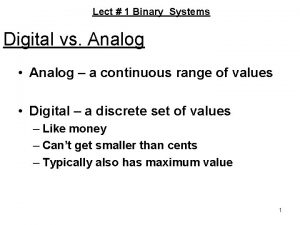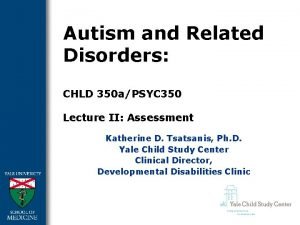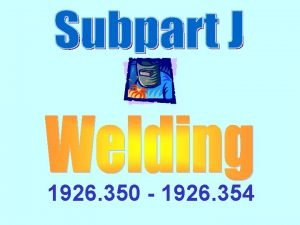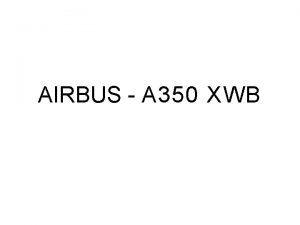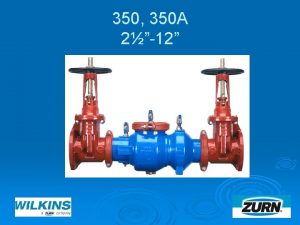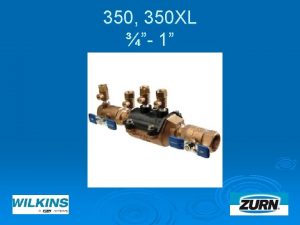EE 350 ECE 490 ANALOG COMMUNICATION SYSTEMS Ch































































- Slides: 63

EE 350 / ECE 490 ANALOG COMMUNICATION SYSTEMS Ch. 11 – Network Communications Telephone Systems R. Munden - Fairfield University 2/23/2010 1

FIGURE 11 -1 TELEPHONE REPRESENTATION.

FIGURE 11 -2 TOUCH-TONE DIALING.

FIGURE 11 -3 TELEPHONE SYSTEM BLOCK DIAGRAM.

FIGURE 11 -4 TWO- TO FOUR-WIRE CONVERSION.

FIGURE 11 -5 ATTENUATION FOR 12, 000 FT OF 26 -GAUGE WIRE.

FIGURE 11 -6 ATTENUATION DISTORTION LIMIT FOR 3002 CHANNEL.

FIGURE 11 -7 DELAY EQUALIZATION.

FIGURE 11 -8 SS 7 LEVELS.

FIGURE 11 -9 AN EXAMPLE OF CAPTURED TELEPHONE SIGNALING MESSAGES AS DISPLAYED USING ATEKTRONIX K 15 PROTOCOL ANALYZER.

FIGURE 11 -10 CONFIGURATION ON THE PROTOCOL ANALYZER SET TO DISPLAY ONLY THE “TEMPORARY FAILURE MESSAGES.

EE 350 / ECE 490 ANALOG COMMUNICATION SYSTEMS Ch. 12 – Transmission Lines R. Munden - Fairfield University 2/23/2010 12

OBJECTIVES Describe the operational characteristics of twisted-pair cable and its testing considerations Describe the physical characteristics of standard transmission lines and calculate Z 0 Calculate the velocity of propagation and the delay factor Analyze wave propagation and reflection for various line configurations Describe how standing waves are produced and calculate the standing wave ratio Use the Smith chart to find input impedance and match loads to a line with matching sections and single-stub tuners Explain the use of line sections to simulate discrete circuitry Troubleshoot the location of a line break using TDR concepts

12 -1 INTRODUCTION A transmission line is the conductive connections between system elements that carry signal power. At RF you can’t simply consider “wires” to be short circuits Energy may also be reflected back

12 -2 TYPES OF TRANSMISSION LINES Two-Wire Open Line Twisted Pair Unshielded Twisted Pair (UTP) Shielded Pair Coaxial Lines Balanced/Unbalanced Lines

TWO-WIRE OPEN LINE FIGURE 12 -1 PARALLEL TWO-WIRE LINE. FIGURE 12 -2 TWO-WIRE RIBBON-TYPE LINES. Used antenna and transmitter or receiver

UNSHIELDED TWISTED PAIR (UTP) FIGURE 12 -3 TWISTED PAIR. FIGURE 12 -4 A GRAPHICAL ILLUSTRATION OF NEAR-END CROSSTALK. • UTP very common in LANs, now CAT 6 and 5 e capable of 1000 Mbps for 100 m. • 4 color-coded twisted pairs w/ RJ-45 connector • Achieving high data rates depends on low attenuation and near-end crosstalk (NEXT) • Delay skew (from uneven lengths) is also important in high speed communications • Return loss is related to signal power reflection due to impedance changes throughout the cable.

SHIELDED PAIR FIGURE 12 -5 SHIELDED PAIR. • Conductors are balanced to ground due to shielding cable • Outside interference is minimized • Cross-talk is minimized

COAXIAL FIGURE 12 -6 RIGID; AIR COAXIAL: CABLE WITH WASHER INSULATOR. FIGURE 12 -7 FLEXIBLE COAXIAL. MOST COMMON VERSION OF COAX; MORE LOSSY, BUT EASIER TO MAKE AND USE Most common form of transmission line

COAX CONNECTORS

BALANCED/UNBALANCED LINES 180° out of phase for CMR FIGURE 12 -8 BALANCED/UNBALANCED CONVERSION. USES A CENTER-TAPPED TRANSFORMER AS A BALUN.

12 -3 ELECTRICAL CHARACTERISTICS OF TRANSMISSION LINES Generator (Input) is nearest source Load (Receiving) end is nearest load No line is perfect, there always electrons moving through the dielectric. In a uniform line, one section can represent the entire line

TWO-WIRE TRANSMISSION LINE Figure 12 -9 Equivalent circuit for a two-wire transmission line

CHARACTERISTIC IMPEDANCE Fig 12 -10 Simplified circuit terminated with characteristic impedance

DETERMINING CHARACTERISTIC IMPEDANCE For Two-wire lines: Insulator For Coax lines: ε Air 1 Polyethylene 2. 3 Teflon 2. 1 Polyethylene Foam 1. 6

TRANSMISSION LINE LOSSES Copper Losses – I 2 R goes up at high frequency due to skin effect Dielectric Losses – increases with voltage and frequency. Best with air, or low dielectric constant. Induction or Radiation Losses – minimized with grounded coax and proper termination FIGURE 12 -11 LINE ATTENUATION CHARACTERISTICS.

12 -4 PROPAGATION OF DC VOLTAGE DOWN A LINE Physical Explanation of Propagation Velocity of Propagation Delay Line Wavelength

DC PROPAGATION FIGURE 12 -12 DC VOLTAGE APPLIED TO A TRANSMISSION LINE. Look at it as sequential charging of capacitors through the inductors

VELOCITY OF PROPAGATION Wavelength in a line:

12 -5 NONRESONANT LINE Traveling DC Waves Traveling AC Waves Definition of a line terminated in its characteristic impedance

TRAVELING DC WAVES FIGURE 12 -14 CHARGED NONRESONANT LINE.

TRAVELING AC WAVES AC signals move as a wavefront The instantaneous voltage along the points of the line reproduce the signal generator All the power is absorbed by the termination resistor

12 -6 RESONANT TRANSMISSION LINE DC Applied to an Open-Circuited Line Incident and Reflected Waves DC Applied to a Short-Circuited Line Standing Waves: Open Line Standing Waves: Shorted Line

DC ON AN OPEN CIRCUIT LINE FIGURE 12 -16 OPEN-ENDED TRANSMISSION LINE. Voltage propagates to the end charging C 3, then since no current can flow the charge in the inductors must dissipate into the capacitors, causes 2 x voltage to be reflected back to the input

INCIDENT AND REFLECTED WAVES Reflected V in phase Reflected I out of phase FIGURE 12 -17 DIRECT CURRENT APPLIED TO AN OPEN-CIRCUITED LINE. In DC at 1 us the load “sees” DC, but the source doesn’t “see” DC until 1 us

DC APPLIED TO A SHORT-CIRCUITED LINE Reflected V out of phase Reflected I in phase FIGURE 12 -18 DIRECT CURRENT APPLIED TO A SHORT-CIRCUITED LINE.

STANDING WAVES When a line is not terminated appropriately a standing wave can develop, points in the line where the voltage and current never change

STANDING WAVES FIGURE 12 -20 CONVENTIONAL PICTURE OF STANDING—WAVES OPEN LINE.

FIGURE 12 -21 STANDING WAVES OF VOLTAGE AND CURRENT.

FIGURE 12 -22 DIAGRAM FOR EXAMPLE 12 -6.

12 -7 STANDING WAVE RATIO Reflection Coefficient: Quarter-Wavelength Transformer Electrical Length

EFFECTS OF MISMATCH The full generator power does not reach the load The cable dielectric may break down as a result of high-value standing waves of voltage (voltage nodes). The existence of reflections (and rereflections) increases the power loss in the form of I 2 R heating, especially at the high-value standing waves of current (current nodes) Noise problems are increased by mismatches “Ghost” signals can be created

QUARTER-WAVELENGTH TRANSFORMER FIGURE 12 -23 /4 MATCHING SECTION FOR EXAMPLE 12 -7.

ELECTRICAL LENGTH FIGURE 12 -24 EFFECT OF LINE ELECTRICAL LENGTH. Transmission line effects are only important when the lines are electrically long. For telephone 300 Hz signals λ=621 miles, so it doesn’t really matter. For 10 GHz signals λ=3 cm.

12 -8 THE SMITH CHART Transmission Line Impedance Smith Chart Introduction Using the Smith Chart Corrections for Transmission Loss Matching Using the Smith Chart Stub Tuners

SMITH CHART Line impedance at a point FIGURE 12 -24 SMITH CHART.

FIGURE 12 -26 SMITH CHART FOR EXAMPLE 12 -8.

FIGURE 12 -27 SMITH CHART FOR EXAMPLE 12 -9.

FIGURE 12 -28 STUB TUNERS.

FIGURE 12 -29 SMITH CHART FOR EXAMPLE 12 -10.

12 -9 TRANSMISSION LINE APPLICATIONS Discrete Circuit Simulation Baluns Transmission Lines as Filters Slotted Lines Time-Domain Reflectometery

FIGURE 12 -30 TRANSMISSION LINE SECTION EQUIVALENCY.

FIGURE 12 -31 BALUNS.

FIGURE 12 -32 QUARTER-WAVE FILTERS.

FIGURE 12 -33 TIME-DOMAIN REFLECTOMETRY.

FIGURE 12 -33 (CONTINUED) TIME-DOMAIN REFLECTOMETRY.

12 -10 TROUBLESHOOTING Common Applications Losses on Transmission Lines Interference on Transmission Lines Cable Testing Television Antenna Line Repair

FIGURE 12 -34 HEAT RADIATION AND LEAKAGE LOSSES.

12 -11 TROUBLESHOOTING W/ MULTISIM

FIGURE 12 -35 AN EXAMPLE OF USING THEMULTISIM NETWORK ANALYZER TO ANALYZE A 50Ω RESISTOR.

FIGURE 12 -36 THE SMITH CHART FOR THE TEST OF THE 50 -Ω RESISTOR.

FIGURE 12 -37 THE SMITH CHART RESULT FOR THE SIMPLERC NETWORK.

FIGURE 12 -38 THE SMITH CHART RESULT FOR THE SIMPLERL NETWORK.
 Ece 490
Ece 490 Ece 490
Ece 490 Ece 490
Ece 490 Ece 490
Ece 490 Analog vs digital communication systems
Analog vs digital communication systems Introduction to digital control
Introduction to digital control Introduction to digital control system
Introduction to digital control system Dari 60 orang siswa ternyata 36 orang gemar membaca
Dari 60 orang siswa ternyata 36 orang gemar membaca Jarak kota a ke b adalah 85 km suatu peta mempunyai skala
Jarak kota a ke b adalah 85 km suatu peta mempunyai skala Tabel distribusi weibull
Tabel distribusi weibull 490 bce
490 bce Persian wars
Persian wars A theater has 490 seats
A theater has 490 seats Raspberry pi lab manual
Raspberry pi lab manual Cse 490
Cse 490 580-490
580-490 Neutrale erträge
Neutrale erträge Ch 490 study guide
Ch 490 study guide 490 nm
490 nm Harga saham di bej mempunyai nilai tengah 490 7
Harga saham di bej mempunyai nilai tengah 490 7 Rumus distribusi normal
Rumus distribusi normal Sfu library database
Sfu library database Harga saham di bej mempunyai nilai tengah 490 7
Harga saham di bej mempunyai nilai tengah 490 7 Find the percentage decrease from 490 to 343
Find the percentage decrease from 490 to 343 490590
490590 490590
490590 Pt gs mengklaim rata rata berat buah mangga
Pt gs mengklaim rata rata berat buah mangga Ab 490
Ab 490 If the wavelength of a monochromatic source is 490
If the wavelength of a monochromatic source is 490 Kr e 490
Kr e 490 Fidelity of radio receiver
Fidelity of radio receiver Noise in analog modulation
Noise in analog modulation Analog communication system
Analog communication system Digital to analog conversion in data communication
Digital to analog conversion in data communication Block diagram of analog communication system
Block diagram of analog communication system Eee 360
Eee 360 Switching modulator
Switching modulator Analog communication
Analog communication W=fxd
W=fxd Ptt-350
Ptt-350 Ptt-350
Ptt-350 Pulsus paradoxus
Pulsus paradoxus Rumus jarak berpapasan
Rumus jarak berpapasan Emarketing plan
Emarketing plan Subtraction rule example
Subtraction rule example Fincoid 350
Fincoid 350 Csce 350
Csce 350 Csce 350 tamu
Csce 350 tamu 350-170-120
350-170-120 Cisco aironet 350 drivers
Cisco aironet 350 drivers Blackhawk king air 350
Blackhawk king air 350 Vince purchased a used car for $11 200
Vince purchased a used car for $11 200 240'ın %10 fazlası kaçtır
240'ın %10 fazlası kaçtır Fick ptt
Fick ptt Two crates each of mass 350 kg
Two crates each of mass 350 kg Mechanics of materials
Mechanics of materials Alvear y cardeza 350
Alvear y cardeza 350 4725/350
4725/350 Comp 350
Comp 350 350 forts in maharashtra
350 forts in maharashtra Army eo regulation
Army eo regulation Compsci 345
Compsci 345 Cis 350
Cis 350 586 400 000 in scientific notation
586 400 000 in scientific notation
